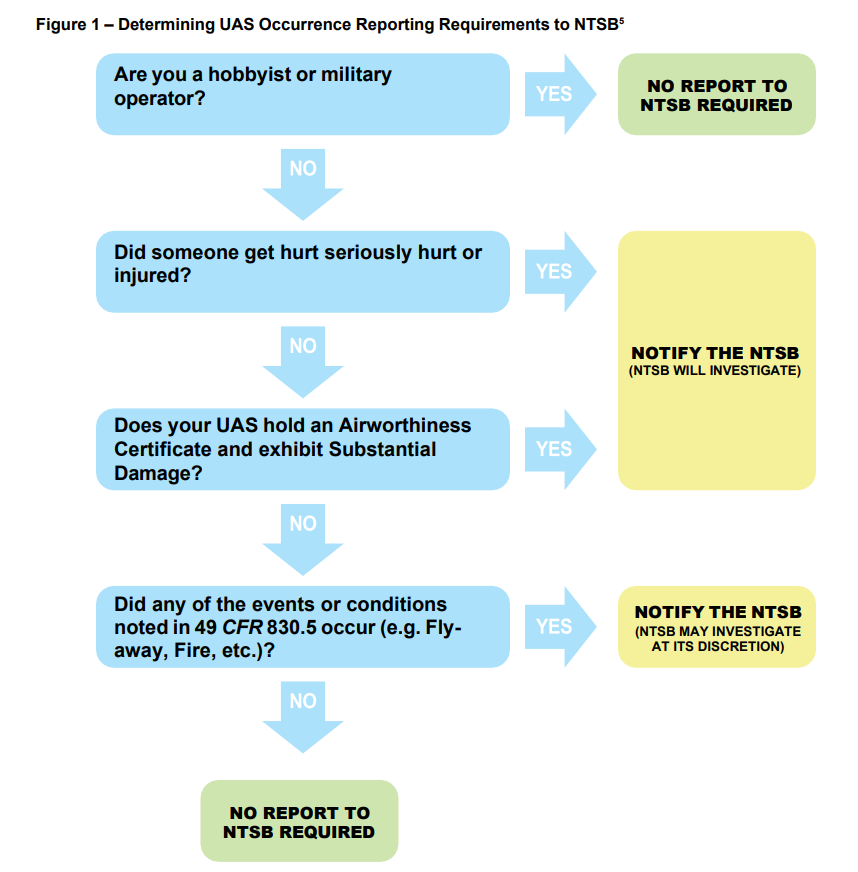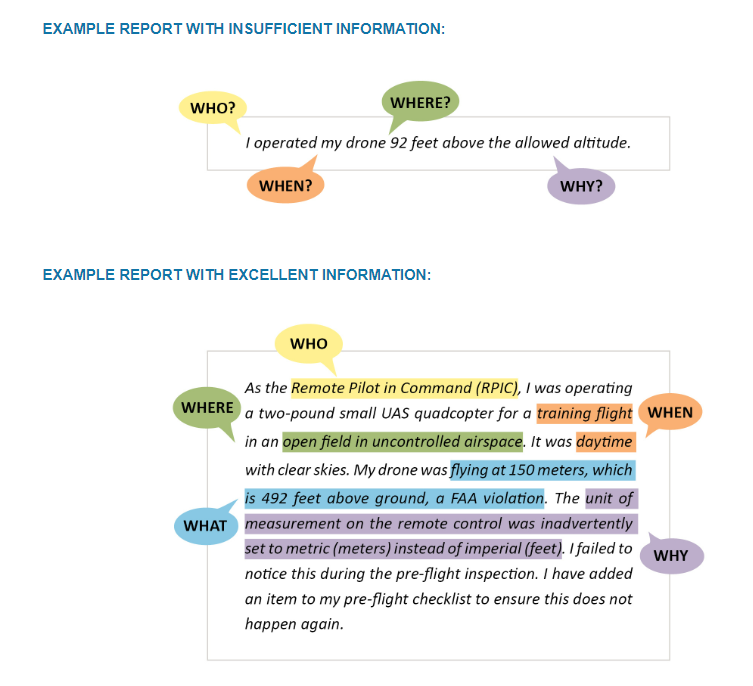.png?width=1640&height=924&name=ARE%20YOU%20PREPARED%20FOR%20A%20DRONE%20CRASH%20(2).png)
.png?width=1640&height=924&name=ARE%20YOU%20PREPARED%20FOR%20A%20DRONE%20CRASH%20(2).png)
UAS pilots should have a clear understanding of the process and procedure for reporting a drone crash. A documented checklist to outline the reporting process can support your safety culture.
Accidents and incidents can happen in any industry or organization. They can have serious consequences for individuals, the environment, and the reputation of the organization. Organizations need to have an effective safety management system in place and all UAS pilots should have a clear understanding of the process and procedure following a crash in order to adhere to the safety culture of the organization.
In this blog post, we will discuss the actions that need to be taken following an accident - who to report to, when and where to report, and what details are required in the reports.
If you're involved in a drone crash, you must report it to the National Transportation Safety Board (NTSB) and the Federal Aviation Administration (FAA). Consider voluntary reporting to NASA's Aviation Safety Reporting Program for added protections.
Immediately following a crash:
- Contact 911
- Contact the National Transportation Safety Board (NTSB) for accident or serious incident.
Within 10 days of a crash:
- Notify the Federal Aviation Administration (FAA) of the occurrence of an accident.
- Complete the "NASA Form," or Aviation Safety Reporting System (ASRS) report - aka “The NASA Report.”
The below graphic may be helpful as you determine whether or not you are required to file a report with the NTSB:

Image source: NTSB
The NASA ASRA website has included some terrific FAQs along with the below examples of the kind of information that is most helpful to include in your report:
You should aim to answer the following questions:
- Does my identification strip provide adequate contact information?
- What was the type of event / situation?
- When did it happen?
- What was my involvement in the event? Anyone else involved?
- What was my location at the time of the event? Where was my UAS?
- What was the operating environment at the time of the event (e.g., weather, light)?
- What type of airspace was I operating in?
- Is there enough information about the UAS involved in the event?
- What were the contributing factors?
- Does my event / situation description tell the whole story?
- What was the result?
- Have I provided ideas for corrective actions?

If the crash is part of a commercial operation, the following essential elements should be included in an organizational incident or accident investigation program:
1. Fact finding and data collection
- Perform employee interviews
- Obtain failed hardware and available onboard system data for analysis
- Conduct a procedural review
- Conduct a training program review
- Perform technical expert interviews (internal and external)
- Review payload imagery and telemetry data (if available)
- Complete a physical survey of the operating area (as required)
- Contact the manufacturer to discuss product quality concerns
- Conduct a cyber security review for possible interference or hacking of network signals (as required)
2. Data analysis
- Assemble Subject Matter Experts (SMEs) to evaluate the facts
- Attain a consensus on the facts, sequence of events, and deficiencies
- Resolve any ambiguities in the data or system analysis
- Collaborate with process owners on potential corrective actions
3. Written summary
- Summarize factual information
- Describe analytical methods and conclusions
- Summarize the sequence of events and results of root cause(s) analysis
- Explain any gaps in data to enhance the credibility of the report
4. Findings, conclusions, and recommendations
- Provide senior management with a thorough review of the facts, failures in operational procedures
- Develop a Corrective Action Plan (CAP) in collaboration with the process owner
- Conduct follow-up assessments to ensure the effectiveness and sustainability of the corrective actions
Be sure to take a look at this from a legal perspective in this post from Rupprecht Law P.A.
Safety training and a committed safety culture with safety promotion and clear policy and procedure is the best way to mitigate risk. The amount of training should be commensurate with the size and complexity of your operation.
If you or your business would like to take a more proactive approach to building a safety culture and establishing a safety management system, please contact us!
👉👉 Stay in touch with USI - Subscribe to our Monthly Safety Brief! 👈👈
.png?width=135&height=90&name=Website%20Main%20Nav%20Logo%20(151%20%C3%97%20100%20px).png)